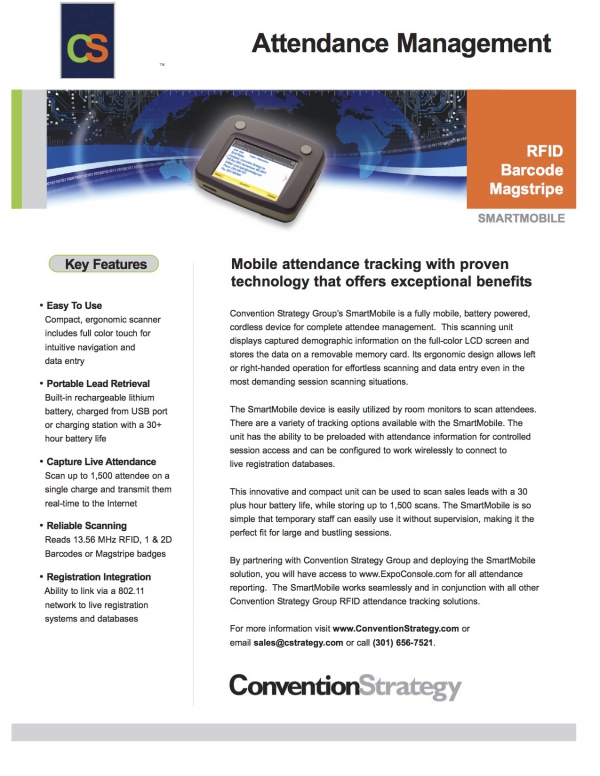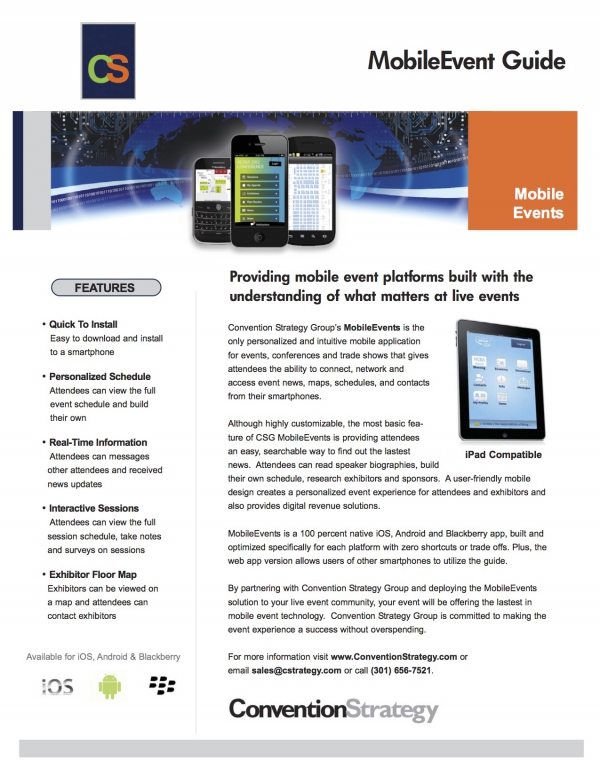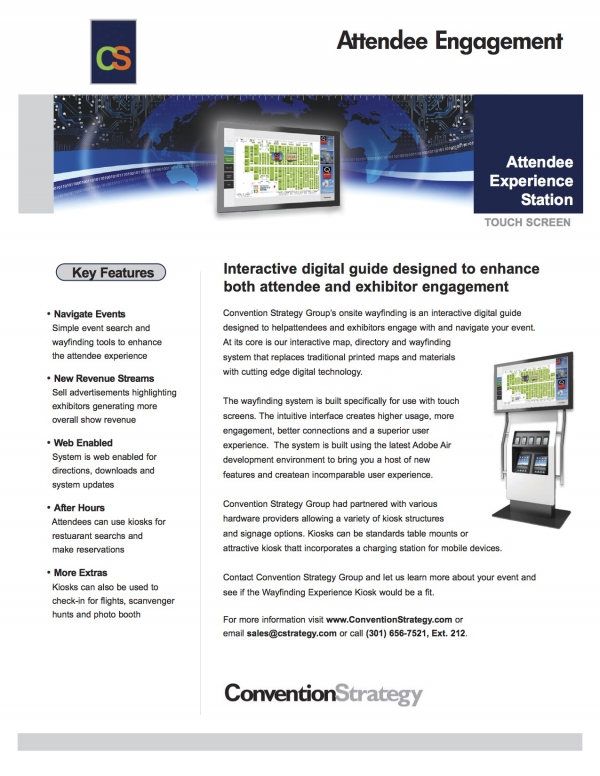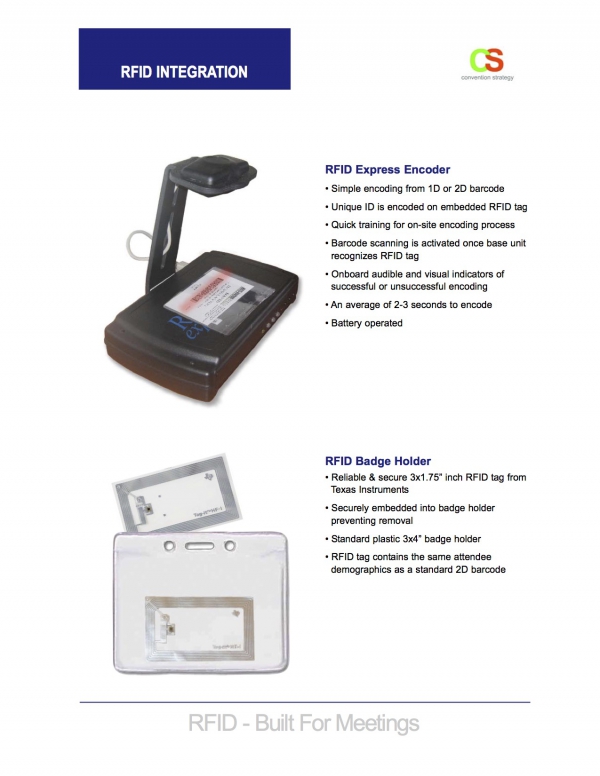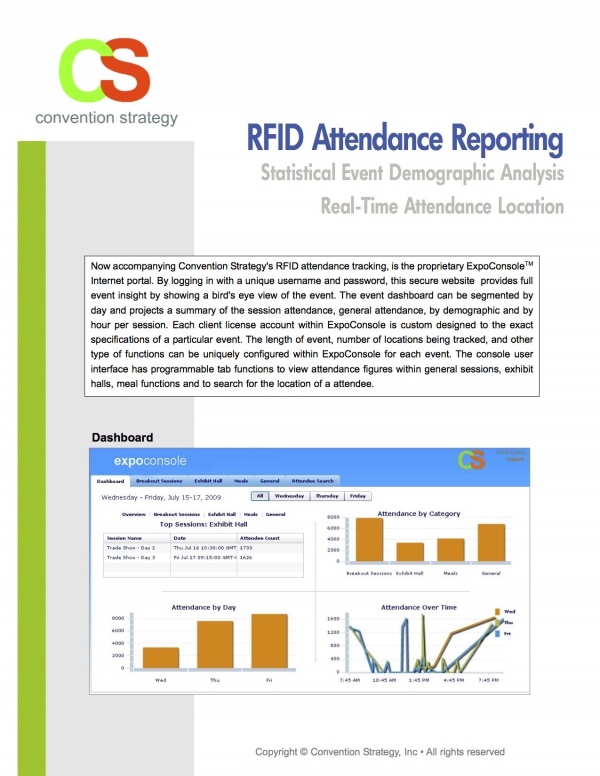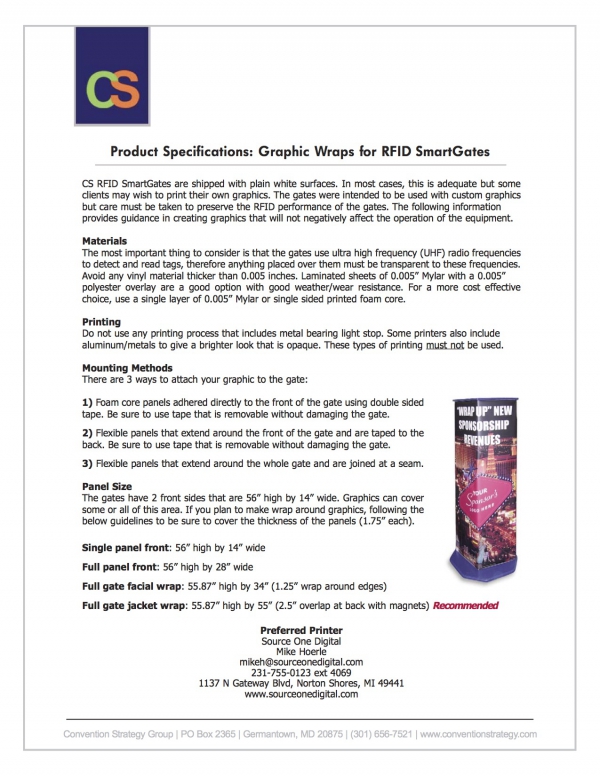Convention Strategy |
Faqs & Brochures.
Frequent Questions.
Here are some frequently asked questions if you do not see your question here or need help with anything at all please do not hesitate to contact us.
Radio Frequency Identification (RFID) is an automatic identification method, relying on storing and remotely retrieving data using devices called RFID tags or transponders. An RFID tag is an object that can be attached to or incorporated into a product, animal, or person for the purpose of identification using radio waves. Chip-based RFID tags contain silicon chips and antennae. Passive tags require no power source, whereas active tags require an internal power source.
The benefits of implementing RFID (Radio Frequency Identification) in meetings, conferences & events comes from the ability to be able to effectively measure and enhance the overall value for both attendees and exhibitors. These new insights have not been available to show management until the use of RFID within the conference environment.
By implementing RFID you will be able to:
- Evaluate overall facilitation of interaction between attendees & exhibitors
- Track attendees for CME/CEU accreditation
- Track attendance for event statistical reasons
- RFID exhibit lead retrieval
- Facilitate access to on-site message centers & cyber-cafés
- Allow easier on-site surveying capabilities
- Embed RFID technology into membership cards
Active Tags
RFID tags with an internal power source. Battery life is several years, the read range spans larger distances and usually is adjustable.
Antenna
Used by both RFID tags and readers, they receive and transmit radio waves.
Encode
The process of writing data to an RFID tag.
Frequency
The speed of radio waves traveling between an RFID tag and a reader. Speeds are generally given in terms of KHz (kilo hertz), MHz (mega hertz), and GHz (giga hertz).
Interference
Usually a liquid or metal that prevents the radio signals to be read correctly by an RFID tag or transmitted accurately by an RFID writer.
Passive Tags
RFID tags without a direct power source. Tags receive power from radio waves transmitted by a reader/antenna. Read range is generally a shorter distance.
Read Range
The distance where an RFID tag is read by a antennae/reader.
Reader
Device that reads/translates data from an RFID tag.
Radio Frequency Identification
Acronym used in description of a technology utilizing radio waves to uniquely encode and read items.
RFID Chip
Silicon chip, which is encoded/programmed with attendee’s unique information. Tags can be written/encoded multiple times with unique information.
RFID Tag
Consisted of an RFID chip and an accompanying antenna.
Transponder
The technical name for an RFID tag.
Writer
Device that transmits data to an RFID tag.



